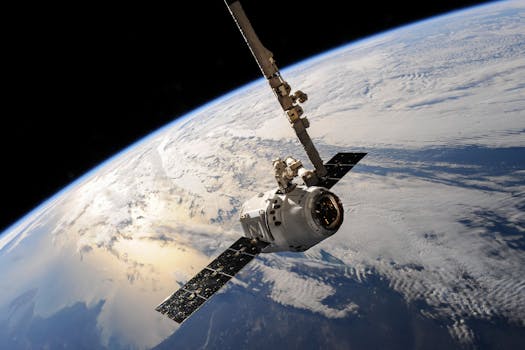The Future of Satellites: Revolutionizing Global Connectivity
The future of satellites is poised to revolutionize global connectivity, enabling faster and more reliable communication networks. With advancements in technology, satellites are becoming increasingly important for a wide range of applications, from navigation and communication to weather forecasting and Earth observation.

The Future of Satellites: Revolutionizing Global Connectivity
Satellite technology has come a long way since the launch of the first artificial satellite, Sputnik, in 1957. Today, satellites play a vital role in our daily lives, enabling global connectivity, navigation, weather forecasting, and Earth observation. As technology continues to evolve, the future of satellites is poised to revolutionize the way we communicate, access information, and understand our planet.
The future of satellites is closely tied to the development of new technologies, such as satellite constellations, reusable rockets, and advanced materials. Satellite constellations, for example, involve launching multiple small satellites into orbit to provide global coverage and enable real-time communication. Companies like SpaceX, OneWeb, and Amazon’s Kuiper Systems are already working on deploying satellite constellations to provide high-speed internet access to remote and underserved communities.
Advancements in Satellite Technology
Advances in satellite technology are driving the development of more efficient, cost-effective, and capable satellites. New materials and designs are being used to build lighter, more fuel-efficient satellites that can operate for longer periods. Additionally, advancements in propulsion systems, such as electric propulsion and advanced ion engines, are enabling satellites to maneuver more efficiently and extend their lifespan.
Another area of research is the development of quantum satellites, which use quantum entanglement to enable secure communication over long distances. Quantum satellites have the potential to revolutionize the way we communicate sensitive information, such as financial transactions and military communications.
Applications of Satellite Technology
Satellites have a wide range of applications, from navigation and communication to weather forecasting and Earth observation. Navigation systems, such as GPS, rely on satellites to provide location information and timing signals. Communication satellites enable global connectivity, facilitating international communication, broadcasting, and data transfer.
Weather forecasting satellites, such as geostationary satellites, provide critical data on weather patterns, enabling meteorologists to predict weather events and issue warnings. Earth observation satellites, such as Landsat and Sentinel-2, provide high-resolution images of the Earth’s surface, enabling scientists to monitor climate change, track natural disasters, and manage natural resources.
Challenges and Opportunities
Despite the many benefits of satellite technology, there are also challenges and opportunities that need to be addressed. One of the major challenges is the increasing amount of space debris in Earth’s orbit, which poses a risk to operational satellites and spacecraft. To mitigate this risk, companies and governments are working on developing sustainable practices, such as designing satellites for disposal and using reusable rockets.
Another opportunity is the development of satellite-based services, such as satellite-based internet and satellite-based navigation. These services have the potential to provide connectivity and navigation to remote and underserved communities, enabling economic growth and social development.
Conclusion
In conclusion, the future of satellites is poised to revolutionize global connectivity, enabling faster and more reliable communication networks. With advancements in technology, satellites are becoming increasingly important for a wide range of applications, from navigation and communication to weather forecasting and Earth observation. As the satellite industry continues to evolve, it is likely that we will see new and innovative applications of satellite technology, driving economic growth, social development, and scientific discovery.



